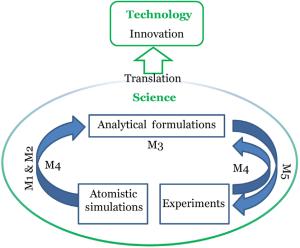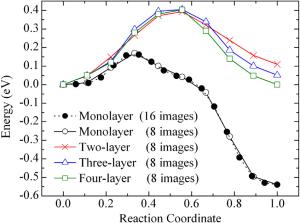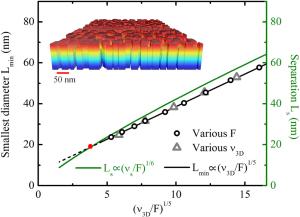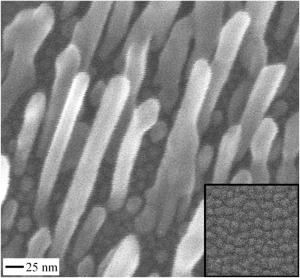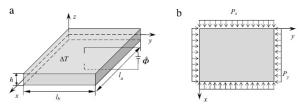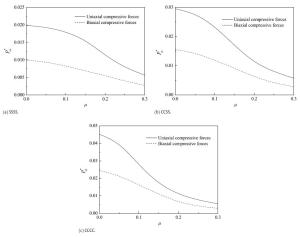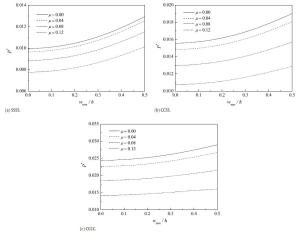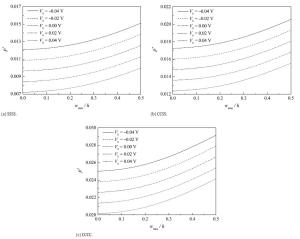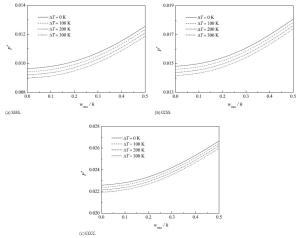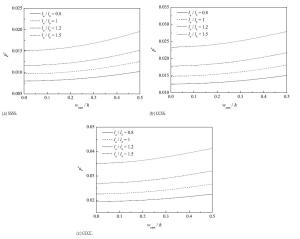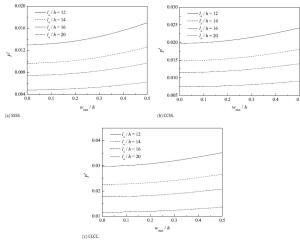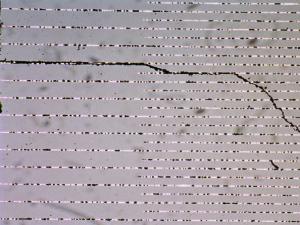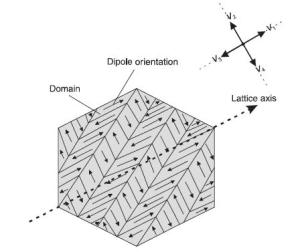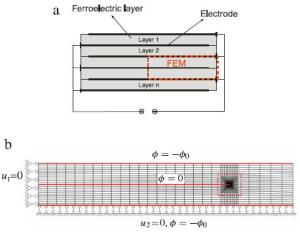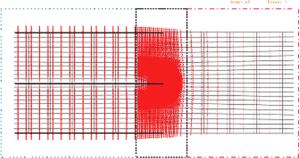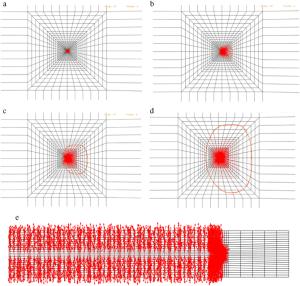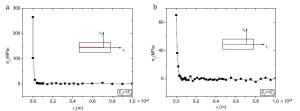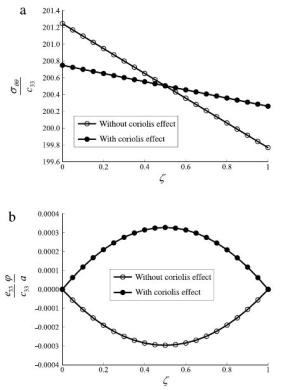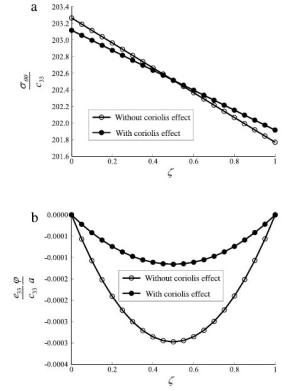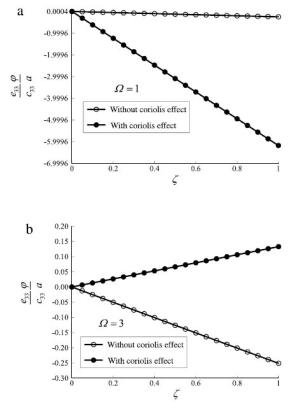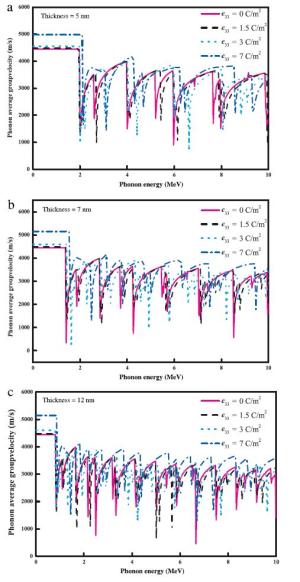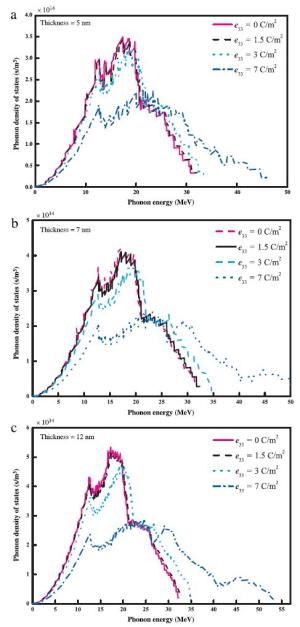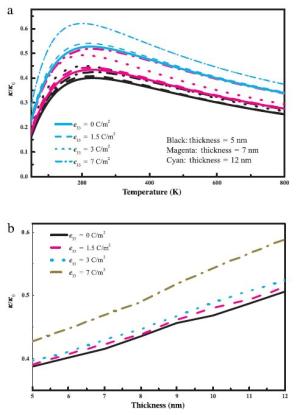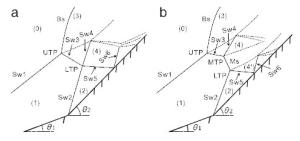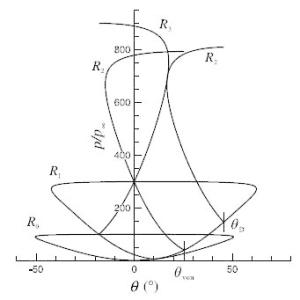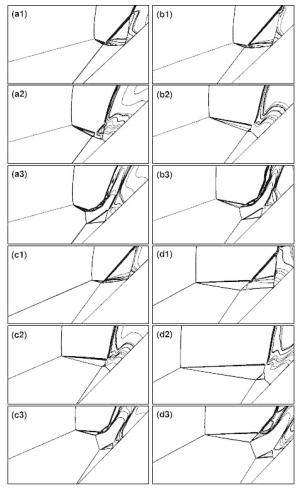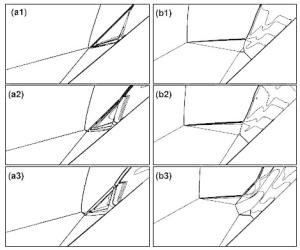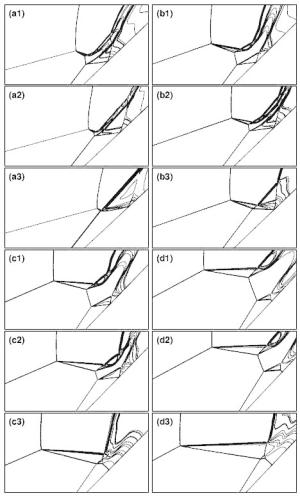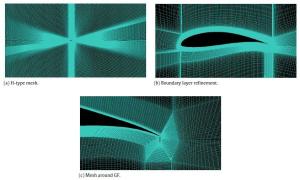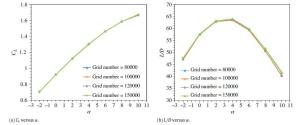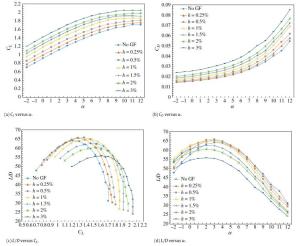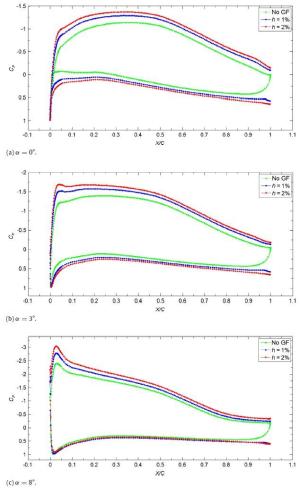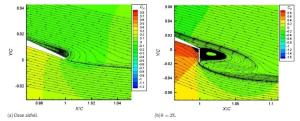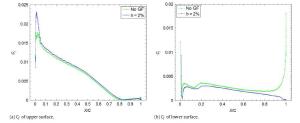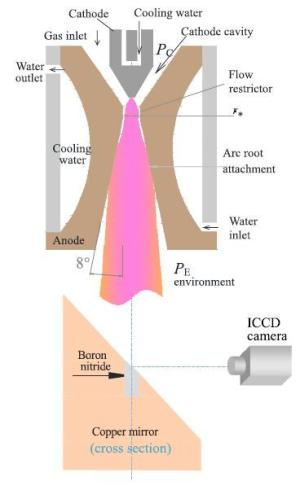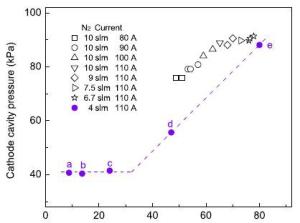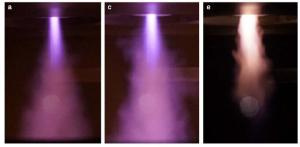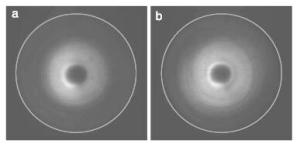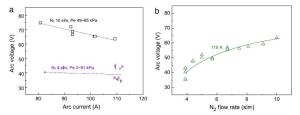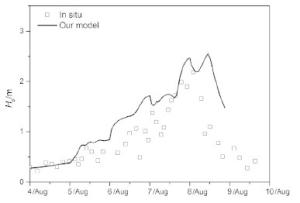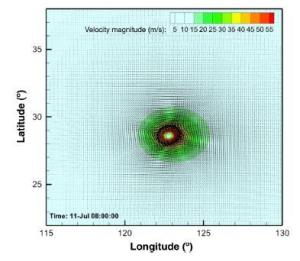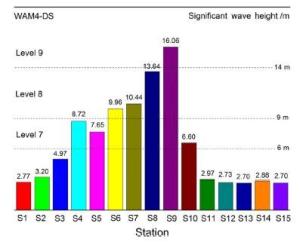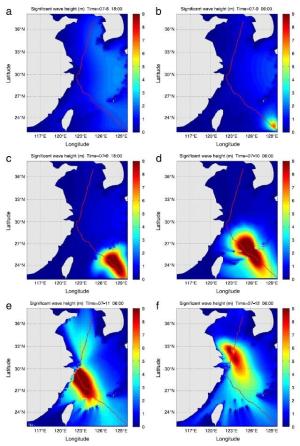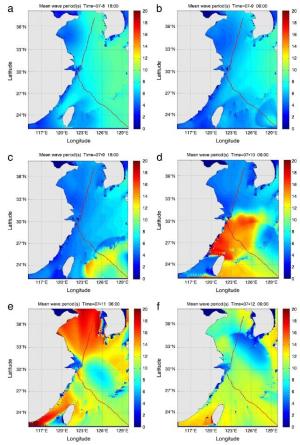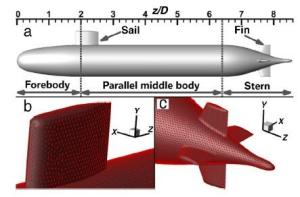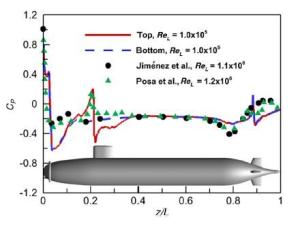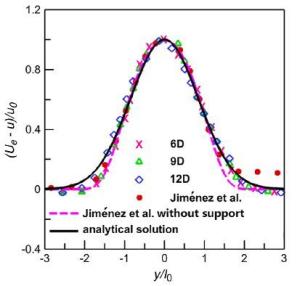Institute of Mechanics,
Chinese Academy of Sciences
2016 Vol.6(6)
Display Mode: |
Theoretical and Applied Mechanics Letters 2016, 6(6): 249-252.
doi: 10.1016/j.taml.2016.10.002
Abstract:
A synergy of computer simulations, analytical formulations, and experiments proves very effective in research and development. Using nanorod growth as an example, this letter presents the synergy of the three complementary approaches in research, and demonstrates its effectiveness. Through this synergy, a theoretical framework of nanorod growth emerges; through the direction of the theories, experimental realization of smallest well-separated nanorods becomes reality; through the realization of such nanorods, metallic glue in ambient environments becomes technical reality and commercial possibility.
A synergy of computer simulations, analytical formulations, and experiments proves very effective in research and development. Using nanorod growth as an example, this letter presents the synergy of the three complementary approaches in research, and demonstrates its effectiveness. Through this synergy, a theoretical framework of nanorod growth emerges; through the direction of the theories, experimental realization of smallest well-separated nanorods becomes reality; through the realization of such nanorods, metallic glue in ambient environments becomes technical reality and commercial possibility.
Theoretical and Applied Mechanics Letters 2016, 6(6): 253-267.
doi: 10.1016/j.taml.2016.10.003
Abstract:
This paper attempts to investigate the buckling and post-buckling behaviors of piezoelectric nanoplate based on the nonlocal Mindlin plate model and von Karman geometric nonlinearity. An external electric voltage and a uniform temperature rise are applied on the piezoelectric nanoplate. Both the uniaxial and biaxial mechanical compression forces will be considered in the buckling and post-buckling analysis. By substituting the energy functions into the equation of the minimum total potential energy principle, the governing equations are derived directly, and then discretized through the differential quadrature (DQ) method. The buckling and post-buckling responses of piezoelectric nanoplates are calculated by employing a direct iterative method under different boundary conditions. The numerical results are presented to show the influences of different factors including the nonlocal parameter, electric voltage, and temperature rise on the buckling and post-buckling responses.
This paper attempts to investigate the buckling and post-buckling behaviors of piezoelectric nanoplate based on the nonlocal Mindlin plate model and von Karman geometric nonlinearity. An external electric voltage and a uniform temperature rise are applied on the piezoelectric nanoplate. Both the uniaxial and biaxial mechanical compression forces will be considered in the buckling and post-buckling analysis. By substituting the energy functions into the equation of the minimum total potential energy principle, the governing equations are derived directly, and then discretized through the differential quadrature (DQ) method. The buckling and post-buckling responses of piezoelectric nanoplates are calculated by employing a direct iterative method under different boundary conditions. The numerical results are presented to show the influences of different factors including the nonlocal parameter, electric voltage, and temperature rise on the buckling and post-buckling responses.
Theoretical and Applied Mechanics Letters 2016, 6(6): 268-273.
doi: 10.1016/j.taml.2016.11.005
Abstract:
Micromechanical finite element methods are developed based on a nonlinear constitutive model of ferroelectric polycrystals. Electromechanical behaviors ahead of an internal electrode tip are numerically simulated in multilayer ferroelectric actuators. Around the electrode edge, the nonuniform electric field generates a concentration of stress due to the incompatible strain as well as spontaneous strain. The preferred domain switching enhances the concentration of residual stress and may cause the actuators to crack. An electrically permeable crack emanating from an internal electrode is analyzed. A large scale domain switching zone is found in the vicinity of crack tips. The larger the actuating strain and electric field are, the larger the switching zone will be. The size of switching zone even reaches the scale of crack length with increasing electromechanical loading.
Micromechanical finite element methods are developed based on a nonlinear constitutive model of ferroelectric polycrystals. Electromechanical behaviors ahead of an internal electrode tip are numerically simulated in multilayer ferroelectric actuators. Around the electrode edge, the nonuniform electric field generates a concentration of stress due to the incompatible strain as well as spontaneous strain. The preferred domain switching enhances the concentration of residual stress and may cause the actuators to crack. An electrically permeable crack emanating from an internal electrode is analyzed. A large scale domain switching zone is found in the vicinity of crack tips. The larger the actuating strain and electric field are, the larger the switching zone will be. The size of switching zone even reaches the scale of crack length with increasing electromechanical loading.
Theoretical and Applied Mechanics Letters 2016, 6(6): 274-276.
doi: 10.1016/j.taml.2016.10.001
Abstract:
Coriolis effect is considered in the analysis of a rotating piezoelectric hollow cylinder. An inhomogeneous Bessel equation governing the radial mechanical displacement is derived, which can be approximated as an Euler type differential equation when the cylinder is very thin. Numerical examples show that the Coriolis effect can be significant under certain conditions.
Coriolis effect is considered in the analysis of a rotating piezoelectric hollow cylinder. An inhomogeneous Bessel equation governing the radial mechanical displacement is derived, which can be approximated as an Euler type differential equation when the cylinder is very thin. Numerical examples show that the Coriolis effect can be significant under certain conditions.
Theoretical and Applied Mechanics Letters 2016, 6(6): 277-281.
doi: 10.1016/j.taml.2016.11.001
Abstract:
The effect of piezoelectricity on phonon properties and thermal conductivity of gallium nitride (GaN) nanofilms is theoretically investigated. The elasticity model is utilized to derive the phonon properties in spatially confined GaN nanofilms. The piezoelectric constitutive relation in GaN nanofilms is taken into account in calculating the phonon dispersion relation. The modified phonon group velocity and phonon density of state as well as the phonon thermal conductivity are also obtained due to the contribution of piezoelectricity. Theoretical results show that the piezoelectricity in GaN nanofilms can change significantly the phonon properties such as the phonon group velocity and density of states, resulting in the variation of the phonon thermal conductivity of GaN nanofilms remarkably. Moreover, the piezoelectricity of GaN can modify the dependence of thermal conductivity on the geometrical size and temperature. These results can be useful in modeling the thermal performance in the active region of GaN-based electronic devices.
The effect of piezoelectricity on phonon properties and thermal conductivity of gallium nitride (GaN) nanofilms is theoretically investigated. The elasticity model is utilized to derive the phonon properties in spatially confined GaN nanofilms. The piezoelectric constitutive relation in GaN nanofilms is taken into account in calculating the phonon dispersion relation. The modified phonon group velocity and phonon density of state as well as the phonon thermal conductivity are also obtained due to the contribution of piezoelectricity. Theoretical results show that the piezoelectricity in GaN nanofilms can change significantly the phonon properties such as the phonon group velocity and density of states, resulting in the variation of the phonon thermal conductivity of GaN nanofilms remarkably. Moreover, the piezoelectricity of GaN can modify the dependence of thermal conductivity on the geometrical size and temperature. These results can be useful in modeling the thermal performance in the active region of GaN-based electronic devices.
Theoretical and Applied Mechanics Letters 2016, 6(6): 282-285.
doi: 10.1016/j.taml.2016.08.011
Abstract:
The transition between regular reflection (RR) and Mach reflection (MR) of type V shock-shock interaction on a double-wedge geometry with high temperature non-equilibrium effects is investigated by extended shock-polar method and numerical simulation. First, the critical angles of transition from detachment criterion and von Neumann criterion are determined by the extended shock-polar method considering the non-equilibrium effects. Then wave patterns and the transition process are numerically obtained. Results of the critical transition angles from shock-polar calculation and numerical simulation show evident disagreement, indicating transition mechanism between RR and MR of type V interaction is changed. By comparing with the frozen counterpart, it is also found that non-equilibrium effects lead to a larger critical wedge angle and a larger hysteresis interval.
The transition between regular reflection (RR) and Mach reflection (MR) of type V shock-shock interaction on a double-wedge geometry with high temperature non-equilibrium effects is investigated by extended shock-polar method and numerical simulation. First, the critical angles of transition from detachment criterion and von Neumann criterion are determined by the extended shock-polar method considering the non-equilibrium effects. Then wave patterns and the transition process are numerically obtained. Results of the critical transition angles from shock-polar calculation and numerical simulation show evident disagreement, indicating transition mechanism between RR and MR of type V interaction is changed. By comparing with the frozen counterpart, it is also found that non-equilibrium effects lead to a larger critical wedge angle and a larger hysteresis interval.
Theoretical and Applied Mechanics Letters 2016, 6(6): 286-292.
doi: 10.1016/j.taml.2016.09.002
Abstract:
A two-dimensional steady Reynolds-averaged Navier-Stokes (RANS) equation was solved to investigate the effects of a Gurney flap on SFYT15 thick airfoil aerodynamic performance. This airfoil was designed for flight vehicle operating at 20 km altitude with freestream velocity of 25 m/s. The chord length (C) is 5 m and the Reynolds number based on chord length is Re=7.76×105. Gurney flaps with the heights ranging from 0.25%C to 3%C were investigated. The shear stress transport (SST) k-ω turbulence model was used to simulate the flow structure around the airfoil. It is showed that Gurney flap can enhance not only the prestall lift but also lift-to-drag ratio in a certain range of angles of attack. Specially, at cruise angle of attack (α=3°), Gurney flap with 0.5%C height can increase lift-to-drag ratio by 2.7%, and lift coefficient by 12.9%, respectively. Furthermore, the surface pressure distribution, streamlines and trailing-edge flow structure around the airfoil are illustrated, which are helpful to understand the mechanisms of Gurney flap on airfoil aerodynamic performance. Moreover, it is found that the increase of airfoil drag with Gurney flap can be attributed to the increase of pressure drag between the windward and the leeward sides of Gurney flap itself.
A two-dimensional steady Reynolds-averaged Navier-Stokes (RANS) equation was solved to investigate the effects of a Gurney flap on SFYT15 thick airfoil aerodynamic performance. This airfoil was designed for flight vehicle operating at 20 km altitude with freestream velocity of 25 m/s. The chord length (C) is 5 m and the Reynolds number based on chord length is Re=7.76×105. Gurney flaps with the heights ranging from 0.25%C to 3%C were investigated. The shear stress transport (SST) k-ω turbulence model was used to simulate the flow structure around the airfoil. It is showed that Gurney flap can enhance not only the prestall lift but also lift-to-drag ratio in a certain range of angles of attack. Specially, at cruise angle of attack (α=3°), Gurney flap with 0.5%C height can increase lift-to-drag ratio by 2.7%, and lift coefficient by 12.9%, respectively. Furthermore, the surface pressure distribution, streamlines and trailing-edge flow structure around the airfoil are illustrated, which are helpful to understand the mechanisms of Gurney flap on airfoil aerodynamic performance. Moreover, it is found that the increase of airfoil drag with Gurney flap can be attributed to the increase of pressure drag between the windward and the leeward sides of Gurney flap itself.
Theoretical and Applied Mechanics Letters 2016, 6(6): 293-296.
doi: 10.1016/j.taml.2016.09.001
Abstract:
For realizing diffused anode attachment in pure nitrogen arcs, a special arc plasma generator was designed and combined with suitable working parameters such as gas flow rate and arc current. The anode has a flow-restrictor channel of 2.8mmdiameter and downstream expansion half-angle of 8°, with the purpose of creating a dispersed nitrogen-arc column by strong gasdynamic expansion effect. Results show that, when thermal blocking condition existed in the flow restrictor and the cathode cavity pressure was higher than that in the exit chamber by at least 9 kPa, the action due to gasdynamic expansion could be much stronger than the self-magnetic contraction effect of the arc and the nitrogen arc column could be effectively dispersed to form a sufficiently diffused attachment on the water-cooled anode surface.
For realizing diffused anode attachment in pure nitrogen arcs, a special arc plasma generator was designed and combined with suitable working parameters such as gas flow rate and arc current. The anode has a flow-restrictor channel of 2.8mmdiameter and downstream expansion half-angle of 8°, with the purpose of creating a dispersed nitrogen-arc column by strong gasdynamic expansion effect. Results show that, when thermal blocking condition existed in the flow restrictor and the cathode cavity pressure was higher than that in the exit chamber by at least 9 kPa, the action due to gasdynamic expansion could be much stronger than the self-magnetic contraction effect of the arc and the nitrogen arc column could be effectively dispersed to form a sufficiently diffused attachment on the water-cooled anode surface.
Theoretical and Applied Mechanics Letters 2016, 6(6): 297-301.
doi: 10.1016/j.taml.2016.11.003
Abstract:
Typhoon-generated waves pose a serious threat to the development of offshore wind power; therefore typical wave parameters caused by typhoon near Donghai Bridge, a demonstration area of offshore wind farm, were analysed. We pay particular attention to the dissipation term which is one of the source terms of governing equation for windwave evolution in WAVEWATCH III. Anisotropic energy dissipation in the wave propagation direction is considered and further applied in our model. A good agreement is observed by comparison with in situ data. Furthermore, the new improved model is used to simulate and forecast wave evolution caused by Chan-Hom (201509). The evolution of typical wave parameters i.e. significant wave height and mean wave period were discussed in the East China Sea, especially near Donghai Bridge.
Typhoon-generated waves pose a serious threat to the development of offshore wind power; therefore typical wave parameters caused by typhoon near Donghai Bridge, a demonstration area of offshore wind farm, were analysed. We pay particular attention to the dissipation term which is one of the source terms of governing equation for windwave evolution in WAVEWATCH III. Anisotropic energy dissipation in the wave propagation direction is considered and further applied in our model. A good agreement is observed by comparison with in situ data. Furthermore, the new improved model is used to simulate and forecast wave evolution caused by Chan-Hom (201509). The evolution of typical wave parameters i.e. significant wave height and mean wave period were discussed in the East China Sea, especially near Donghai Bridge.
Theoretical and Applied Mechanics Letters 2016, 6(6): 302-305.
doi: 10.1016/j.taml.2016.11.004
Abstract:
A large eddy simulation (LES) of the flows around an underwater vehicle model at intermediate Reynolds numbers is performed. The underwater vehicle model is taken as the DARPA SUBOFF with full appendages, where the Reynolds number based on the hull length is 1.0×105. An immersed boundary method based on the moving-least-squares reconstruction is used to handle the complex geometric boundaries. The adaptive mesh refinement is utilized to resolve the flows near the hull. The parallel scalabilities of the flow solver are tested on meshes with the number of cells varying from 50 million to 3.2 billion. The parallel solver reaches nearly linear scalability for the flows around the underwater vehicle model. The present simulation captures the essential features of the vortex structures near the hull and in the wake. Both of the time-averaged pressure coefficients and streamwise velocity profiles obtained from the LES are consistent with the characteristics of the flows pass an appended axisymmetric body. The code efficiency and its correct predictions on flow features allow us to perform the full-scale simulations on tens of thousands of cores with billions of grid points for higher-Reynolds-number flows around the underwater vehicles.
A large eddy simulation (LES) of the flows around an underwater vehicle model at intermediate Reynolds numbers is performed. The underwater vehicle model is taken as the DARPA SUBOFF with full appendages, where the Reynolds number based on the hull length is 1.0×105. An immersed boundary method based on the moving-least-squares reconstruction is used to handle the complex geometric boundaries. The adaptive mesh refinement is utilized to resolve the flows near the hull. The parallel scalabilities of the flow solver are tested on meshes with the number of cells varying from 50 million to 3.2 billion. The parallel solver reaches nearly linear scalability for the flows around the underwater vehicle model. The present simulation captures the essential features of the vortex structures near the hull and in the wake. Both of the time-averaged pressure coefficients and streamwise velocity profiles obtained from the LES are consistent with the characteristics of the flows pass an appended axisymmetric body. The code efficiency and its correct predictions on flow features allow us to perform the full-scale simulations on tens of thousands of cores with billions of grid points for higher-Reynolds-number flows around the underwater vehicles.
 Submit a Paper
Submit a Paper
 Subscription
Subscription
News
MORE+
Call for Papers
MORE+
- Crossing-Mechanics Driven by Big Data
- Machine learning in the fluid mechanics research of wind energy
- Mechanics of Origami/Kirigami structures and metamaterials
- New insights and perspectives on impact biomechanics for human tissues: from injury prevention, protection to protective equipment
- Environmental Mechanics for Extreme Natural Events



